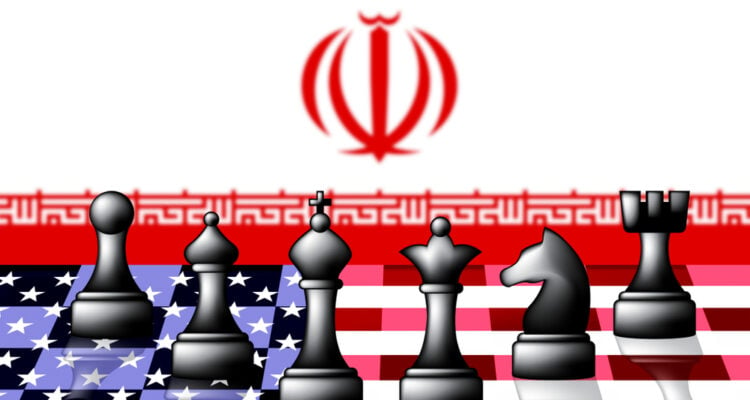The most dramatic and kinetic option for Tehran would be a joint missile and drone attack involving both Iranian and proxy forces from various points in the region.
By Johnathan Spyer, Middle East Forum
Following the killings of Hezbollah’s Fuad Shukr and Hamas’s Ismail Haniyeh, Israel and the Middle East are poised and waiting for the next move.
The two killings represent a significant humiliation for the Iran-led regional axis, which until this point had been projecting a sense of achievement and satisfaction.
The October 7 massacres and the subsequent war may not have come at the express order or at the precise time wanted by the regime in Tehran.
But events have proceeded largely in a way satisfactory to it.
Israel appeared to be isolating itself diplomatically, unable to deliver a death blow to Hamas in Gaza and caught in a contradiction between its twin aims of freeing hostages and destroying the Islamist entity in Gaza.
All this seemed to confirm that the Iranian strategy of seeding proxy armies on the Jewish state’s borders and then using them to bleed Israel to death was working.
The deaths of Haniyeh and Shukr do not reverse this picture entirely, of course.
But they do return focus to that part of the picture most advantageous to Israel, and most uncomfortable to Iran.
Namely, that while Tehran may be without peer when it comes to building and managing proxy military and political forces, in areas of conventional military and intelligence activity and special operations, it is very much the inferior.
The attacks in Beirut and Tehran demonstrate that Israel has penetrated the security structures of the Islamic Revolutionary Guards Corps (IRGC) and its most powerful proxy to their inner core.
They leave Iran in danger of appearing hapless and flailing. For this reason, the attacks have provoked fury among the regime’s most committed defenders, and a desire for swift retribution.
‘Revenge must be harsh, crippling and without further ado,’ thundered Kayhan, main organ of the hard line ‘principalist’ stream within the regime.
The paper’s editor, Hossein Shariatmadari, is close to Supreme Leader Ali Khamenei – who himself promised ‘harsh punishment’ for Israel.
The New York Times reported that Khamenei has ordered a ‘direct strike’ on Israel in response to the killing of Haniyeh on Iranian soil.
Such a strike could take various forms.
The most dramatic and kinetic option for Tehran would be a joint missile and drone attack involving both Iranian and proxy forces from various points in the region.
It is worth noting that the attacks on April 13 following Israel’s killing of IRGC general Mohammed Reza Zahedi did not involve proxy forces and were conducted by Iranian state assets alone.
But Tehran’s proxies in Yemen, Lebanon, Iraq and Syria have all struck at Israel in the course of the current conflict.
A coordinated attack would represent Iran’s maximum response. It is the option most likely to open the door to all out regional war.
A second option would be an attack involving one or another of the proxies alone, or a combination of them.
The Iranian dilemma here would be that such an attack might not be perceived as a sufficiently severe response to even the score for the strike on Tehran.
A third option would be a targeted strike on a prestige Israeli target, such as a senior official.
This would constitute a direct, symmetrical response to the killing of Haniyeh.
Until now, however, Iran has not demonstrated the pinpoint intelligence capacities that alone would make such an operation feasible.
Finally, Iran could leave the issue of vengeance to Hamas itself. It was, after all, a leader of that movement who was Israel’s target.
Given the current parlous state of Hamas’s capabilities, however, this option appears unlikely.
It is important to bear in mind that the killing of Fuad Shukr in Beirut opens up a separate account between Israel and Lebanese Hezbollah.
Until now, Hezbollah had made clear that its current engagement against Israel constituted a ‘support front’ for Hamas in Gaza, which would be closed down on the achievement of a ceasefire in Gaza.
The loss of Shukr in the Lebanese capital introduces a new calculus for Hezbollah, since cessation of fire without retribution for the killing of this senior military official again runs the risk of projecting weakness.
For both the Iranians and their Lebanese proxy, the main dilemma lies in assessing Israeli aims.
Specifically, is Israel prepared to up the ante to the point of a regional war in the event of a large-scale Iranian and proxy counterattack?
Or would the restrictions imposed by the current Gaza conflict –and by the US desire to avoid such a conflagration – force it to absorb such an attack?
The Iranians need to consider carefully.
They have had a decade and a half of uninterrupted success, extending their reach to Iraq, Syria and Yemen, coming close to a nuclear capacity.
Should they now, prematurely from their point of view, provoke a ruinous regional war, they would stand to face extensive damage and destruction.
The US doesn’t want Israel to further escalate, but it would be likely to assist Jerusalem in the face of large scale, sustained attack.
Which option will Tehran choose? We will know soon.
In Jerusalem, the municipality just issued a list of public shelters, along with a laconic statement advising the city’s residents to stock enough water and food for three days.




